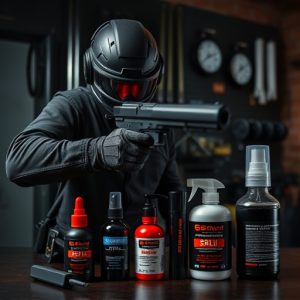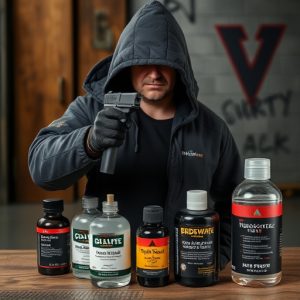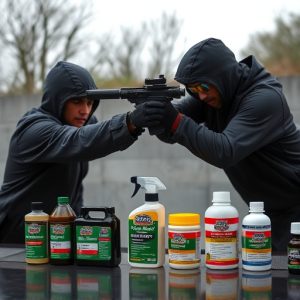Choosing Effective Self-Defense Tools for Personal Security: A Legal and Practical Guide
Self-defense and security products are essential tools for personal safety, with a variety of option…….
Self-defense and security products are essential tools for personal safety, with a variety of options available to suit different needs and scenarios. Impact tools like batons and heavy flashlights can incapacitate an attacker through pain or disorientation. Pepper sprays deliver a temporary inflammation upon contact, while personal alarm systems emit a loud audible alarm to attract help. Concealed carry options such as stun guns and Tasers provide non-lethal electrifying shocks to neutralize assailants. Self-defense jewelry like keychain pepper sprays or personal alarm bracers offer less conspicuous yet effective protection. In close quarters, self-defense keychains and compact pocket protectors serve as discreet defense mechanisms. It's crucial to understand the legal framework surrounding these devices and to practice their correct usage within a comprehensive personal security plan. Users must select tools based on individual safety requirements and ensure they are familiar with local laws regarding their use. The effectiveness of self-defense tools is critical, especially in real-world situations, where they must function under pressure. Pepper spray, stun guns, and personal alarms are popular choices due to their efficiency and convenience for discreet carry. Regular training with these products and knowledge of local laws are essential for effective deployment in critical moments. A layered approach to personal security, incorporating self-defense tools like pepper spray, stun guns, and personal alarms, can significantly enhance one's ability to protect oneself when faced with danger. Understanding the legal parameters surrounding these products is as crucial as selecting the appropriate tool for personal safety, ensuring that their use is both effective and lawful.
In an era where personal safety is paramount, the selection of appropriate self-defense tools plays a critical role in one’s security protocol. This article delves into the diverse array of self-defense products available, assessing their effectiveness in various real-world situations. We will explore the range of options, from non-lethal weaponry to personal alarms, and provide insights into how they can be effectively utilized for defense. Additionally, we address the legal implications of choosing and employing these tools, ensuring readers are well-informed on both practical and ethical considerations in self-defense. Whether you’re seeking to enhance your safety at home, in public spaces, or while traveling, understanding the best self-defense products for personal security is essential.
Understanding the Range of Self-Defense Tools for Personal Security
When considering personal security, a diverse array of self-defense tools is available to suit various needs and circumstances. Key among these self-defense and security products are impact tools like batons and heavy flashlights, which can incapacitate an attacker by causing pain or disorientation. Pepper sprays and personal alarm systems, on the other hand, offer a non-lethal means of deterring aggressors through inflammation or a loud audible alarm that draws attention. For those who prefer concealed carry options, stun guns and Tasers provide an electrifying shock that can stop an assailant without the need for lethal force.
In addition to these, self-defense jewelry such as keychain pepper sprays or personal alarm bracers offer a subtle yet effective line of defense. And for close-quarters protection, self-defense keychains and pocket-sized pocket protectors are discreet yet effective tools against potential threats. It’s crucial to familiarize oneself with the legal implications and proper usage of these devices as part of a comprehensive personal security strategy. Understanding the range of self-defense tools is essential for selecting the right product tailored to your individual needs, ensuring you are prepared to handle threatening situations effectively and safely.
Evaluating the Efficacy of Popular Self-Defense Products in Real-World Scenarios
When assessing the efficacy of self-defense tools in real-world scenarios, it’s crucial to consider how these products perform under pressure and in unpredictable environments. Pepper spray, for instance, is a widely recognized self-defense tool due to its ability to incapacitate an attacker with a highly concentrated irritant, temporarily impairing their vision and respiratory functions. Its compact size allows users to carry it discreetly, which is a significant advantage in deterring potential assailants. Stun guns also serve as effective deterrents due to their ability to deliver a high-voltage electric shock that can subdue an aggressor without causing long-term harm. The effectiveness of stun guns depends on proper aim and the presence of sufficient moisture on the attacker’s skin for the current to take effect.
In addition to these, personal alarm systems are gaining popularity as a self-defense tool. They are designed to emit a loud, attention-grabbing noise that can disorient an attacker and alert bystanders or authorities to your situation. The key to their effectiveness lies in the immediate, noticeable disturbance they create, potentially discouraging further aggressive actions from the perpetrator. Security products such as personal safety alarms come in various forms, including keychain models, wristbands, and mobile app integrations, offering users versatile options for enhancing their personal security. The choice of self-defense tool should be based on individual needs, legal considerations, and the specific context in which it will be used. Regular training and familiarity with local laws are also integral to ensuring that these products can be effectively utilized when needed.
A Guide to Legal Considerations When Choosing and Using Self-Defense Tools
When considering self-defense tools, it’s imperative to be well-versed in the legal landscape governing their use and possession. Laws vary by jurisdiction, so it’s crucial to research and understand the specific regulations where you reside or intend to carry these tools. Self-defense and security products range from non-lethal weapons like pepper spray and stun guns to more serious options such as firearms. Each comes with its own set of legal considerations. For instance, certain states may allow concealed carry of firearms while others strictly regulate or even prohibit them. Similarly, the use of stun guns is permissible in some areas but restricted in others.
Before purchasing and using any self-defense tool, ensure you are aware of the legal requirements, including obtaining necessary licenses or permits. Additionally, familiarize yourself with the circumstances under which such tools can be lawfully employed for self-defense. The repercussions of improper use can range from fines to criminal charges, so it’s essential to use these tools responsibly and within the confines of the law. Always prioritize learning about the legal framework governing self-defense tools in your region, as this knowledge is as critical as selecting the right product for your safety and security needs.


